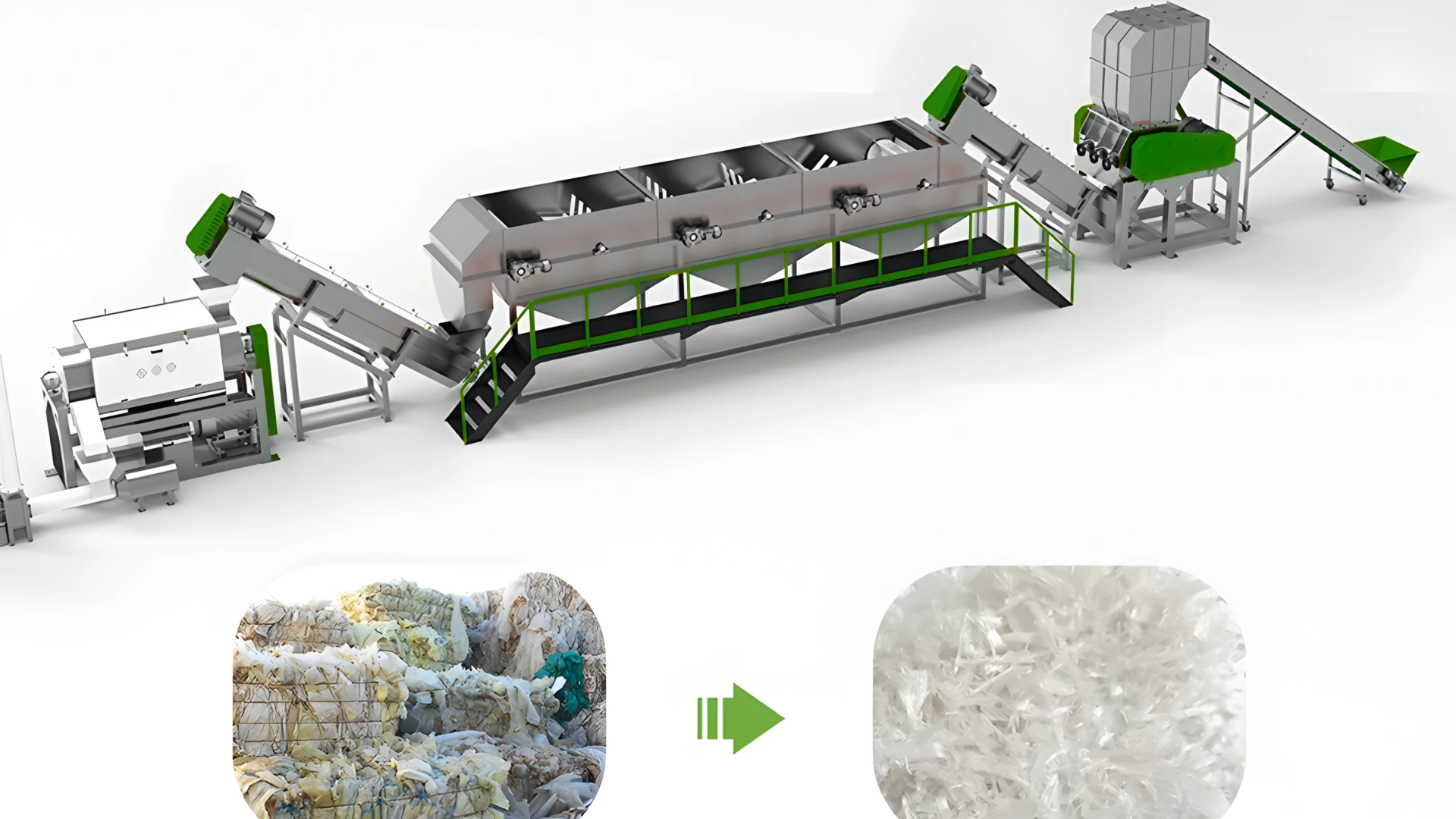Plastic Film Washing Lines: Professional Recycling Solutions
Transform contaminated plastic films, such as LDPE packaging and PP woven bags, into high-value, clean raw materials. Our complete washing lines manage the entire process, preparing your material perfectly for pelletising and re-production.
Shredding
Friction Washing
Drying
Step 1: Pre-treatment – Shredding & Crushing
The first step is breaking the film into small pieces to solve several key problems. This is typically achieved with an industrial Shredder or a wet grinder (Crusher).
Shredders
Heavy-duty, low-speed machines that tear large bales of film into irregular pieces with minimal noise and dust.
Crushers (Wet Grinders)
High-speed machines that cut material into smaller, uniform fragments. Wet grinders also pre-wash the film.
Step 2: High-Speed Friction Washing
A friction washer is highly effective for deep cleaning, using a high-speed rotor to create intense friction that scrubs off dirt and labels. It’s particularly effective at breaking down paper contaminants.
Step 3: Separation
Using a Floating Tank or an advanced Cyclone Separator, this stage separates lighter plastic films from heavier impurities like sand and stones based on density.
Step 4: The Drying System
The final, crucial stage before pelletising. The goal is to reduce moisture to below 15% using equipment like centrifuges and screw presses to ensure high-quality output.
Customising Your Film Washing Line
There is no one-size-fits-all solution. The ideal configuration depends on your raw material, contamination level, and output goals. We recommend discussing your specific needs with an expert to make an informed decision.



